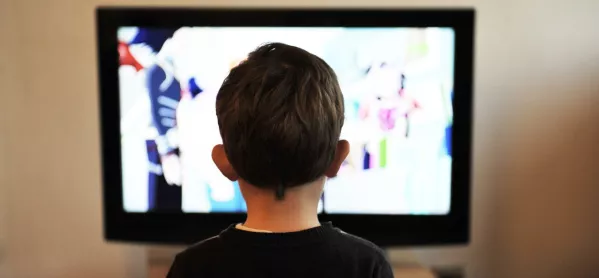- Home
- Reading interventions: why eye tracking might help
Reading interventions: why eye tracking might help

As you read each word of this sentence, try and concentrate on what, exactly, your eyes are doing.
“A lot of people think their eyes move smoothly over the lines of text, so when I tell them that their eyes actually jump from word to word people are often surprised,” explains Dr Holly Joseph, associate professor in the Institute of Education at the University of Reading.
Interviewed in the 29 June issue of Tes, Joseph explains that we don’t focus wholly on words, either.
Reading comprehension
“Most people look a little to the left of the centre of the word if they are reading fluently - which for most will be around the age of 7 - and they then see the immediate companion letters in their vision, and out from that the words get more ‘blurry’, if you can use that term. Hence, when we read, we are making guesses as to what the word is. So with the word ‘because’, you would focus on the ‘c’ and the ‘e’ will be right on the edge of your vision. Adults’ fixations are generally 180-200ms, and typically developing children’s fixations (depending on their age) are closer to 250ms.”
Joseph is using eye-tracking technology to research how children read and what happens when they struggle to read.
For example, her recent focus has been on building a picture of what children do when they encounter a word they do not know, which feeds into the host of recent research around the importance of vocabulary knowledge in accessing the curriculum.
“We often think of learning new words as something that happens in early childhood and at that early point in your life you learn words through spoken language from your parents, etc, but from the age of 9 onwards the majority of words that children learn they learn from reading,” she explains. “So I was interested in looking at what happens when a child is reading a story and they come across a word they don’t know, What do they do to try and understand the meaning of that word and then, when they encounter that word again, how do they then build on that first experience they have of that word?”
Learning to read
Using eye-tracker technology, Joseph has designed a method of capturing this long, complicated process in a laboratory setting, which allows her to look at the extent to which reading times on new words reduce with multiple exposures to these words. She intends to use this information to create what she describes as an “index of learning”.
“In my study, children encountered a number of rare words that they didn’t know in sentences that told them something about what the word means,” she reveals. “For example, ‘confabulated’ might appear in a sentence like, ‘The children confabulated for ages as they waited for the bus.’ So the first time they read that word in a sentence they spend ages reading it. They’ve never seen it before, they don’t know what it means, it’s long and it’s hard to read, so they maybe fixate on it for 600 milliseconds, which is quite long.
“Then they read it again in another sentence and it’s still hard, they still don’t really know what it means, but the word is a little bit more familiar and they are starting to carve out a vague meaning for it. This time the reading time goes down to 500 milliseconds and the next time it maybe goes to 450 and then 400. So over these multiple exposures to this word within sentences reading times gradually go down.”
Reading interventions
Joseph says this gradual reduction in reading times over repeated exposures to a new word can be seen as an “index of learning”: longer reading times are associated with processing difficulty so if we see reading times decreasing each time the word is read, then this tells us that the child is learning something about the word: about its spelling and its meaning.
She adds that some children are more efficient learners (i.e., their reading times reduce more dramatically with each exposure) and some children reduce their reading times very slowly and “this tells us something that is interesting for researchers, but also potentially useful for teachers, too, in working out why children may be struggling”.
“If we look at children who we know have poorer reading comprehension (so-called “poor comprehenders”) compared to those who have better reading comprehension and we give them particular kinds of sentences or passages where they look longer or don’t look longer compared to those who have better comprehension, it might tell us something about why they are having difficulty understanding what they are reading,” she says.
This is an edited version of an article in the 29 June edition of Tes. Subscribers can read the full article here. To subscribe, click here. This week’s Tes magazine is available at all good newsagents. To download the digital edition, Android users can click here and iOS users can click here.
Keep reading for just £1 per month
You've reached your limit of free articles this month. Subscribe for £1 per month for three months and get:
- Unlimited access to all Tes magazine content
- Exclusive subscriber-only stories
- Award-winning email newsletters



